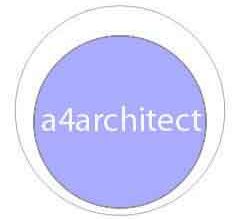Factors to consider when buying land to construct.
Local Authority byelaws .
Each area in Kenya is zoned by the Local Authority and given a set of byelaws that govern. For example, the Nairobi City Council allows for only one single family house to occupy 0.5 acre plot in Karen. Runda and Muthaiga areas.
The same council allows a minimum subdivision of land to 1/8th acre in most other areas whereby the number of family units can be increased such as in the case of apartments.
When buying land for the intention of future construction of apartments, it’s important to clarify with the Local Authority first. An acre of land in Karen currently costs kes 30M. In this acre, one can only construct 2 houses. Next to Karen in Ngong, an acre costs 32m considering a 1/8th acre costs kes 4m.
The reason land in Ngong seems more expensive than land in Karen is because of the different Local Authority byelaws. Land in Ngong can be subdivided into 1/8th acre and highrise flats can be constructed, hence more returns compared to the Karen land.
Topography.
Land situated on a sloppy area such as Kigali-Rwanda, Red Hill and Muranga areas poses a challenge when it comes to foundation construction. There will be alot of excavations and creation of soil retaining walls in a steep sloped land. If the cost of the foundation and retaining wall structure is not captured and budgeted for, this can cause a cost overrun in the overall cost of construction as it happens often in Real Estate development projects in Kigali.
Sloped areas have an advantage of being well drained compared to flat lands such as Ruai , Mombasa road South B and C which are on a relatively flat land. Flat lands tend to flood during rainy period. Some flat areas such as around Runda and Membley in Ruiru tend to have very low water tables hence a more expensive foundation type required while constructing.
It’s also important to look out for physical presence of temporary water bodies such as streams, rivers and lakes. The presence of papyrus and long grass should signify periods of flooring. Presence of dry valleys should signify temporary rivers. Lands too close to a water body are prone to flooding when the rivers and lakes break their banks during rainy season.
Naivasha and Narok towns are a good example of flat land that is prone to flooding during rainy seasons. Ground floor slab in these areas should be well raised from Ground level in case of floods.
Soils.
Constructing Foundations in Black Cotton Soils.
Constructing in Black cotton soil comes up with unique challenges. The major disadvantage is that black cotton soil tends to swell during the rainy season and shrink/crack during the dry season.
This shrinkage/expansion tends to push the floor slab upwards, creating cracks on the floor. Buildings constructed in black cotton soils will require deeper overhangs and wider external pavements to ensure rain water is kept off the building. Heavy gauge polyethene paper will also serve to waterproof the soil from the interior. A minimum depth of 1 foot for hardcore will serve to soak out water to keep the soil dry.
Red soil is stable and does not change in volume when wet hence will cost less to construct on such compared to black cotton soil land. In contrast, Black Cotton Soil has a higher bearing capacity than most other soils so if the contractor uses some ingenuity, he or she can save alot of money while constructing.
Simple solutions such as lifting the slab slightly higher form ground level, water proofing the soil inside the foundation and increasing the cement ratio on the ground floor slab can save alot of money that would have been otherwise used in excavating and backfilling the foundation.
Francis Gichuhi Kamau, Architect.
info@a4architect.com
0721410684


Leave a Reply
You must be logged in to post a comment.